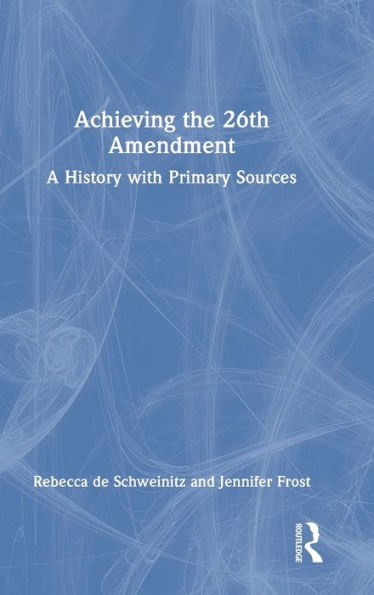Proposed, passed, and ratified in 1971, the 26th Amendment gave the right to vote to 18-, 19-, and 20-year-olds and prohibited discrimination in voting “on account of age.” Recognizing young Americans as first-class citizens with a political voice, it was the last time the United States extended voting rights to a new group. From the early 1940s to the early 1970s, Americans debated the merits of a younger voting age and built a movement across age, party, and regional differences for the 26th Amendment. The struggle for youth suffrage intersected with key events and developments during these years, such as World War II, the Vietnam War, the African American movement for civil and voting rights, the baby boom and youth activism. With historical images and excerpts from government documents, pamphlets, organizational and personal collections, mainstream and campus newspapers, and magazines, this book presents a rich portrait of the struggle for youth enfranchisement.
Achieving the 26th Amendment: A History with Primary Sources is an ideal resource for students and professors in twentieth-century United States history, civics and government, and social movements and activism.
Proposed, passed, and ratified in 1971, the 26th Amendment gave the right to vote to 18-, 19-, and 20-year-olds and prohibited discrimination in voting “on account of age.” Recognizing young Americans as first-class citizens with a political voice, it was the last time the United States extended voting rights to a new group. From the early 1940s to the early 1970s, Americans debated the merits of a younger voting age and built a movement across age, party, and regional differences for the 26th Amendment. The struggle for youth suffrage intersected with key events and developments during these years, such as World War II, the Vietnam War, the African American movement for civil and voting rights, the baby boom and youth activism. With historical images and excerpts from government documents, pamphlets, organizational and personal collections, mainstream and campus newspapers, and magazines, this book presents a rich portrait of the struggle for youth enfranchisement.
Achieving the 26th Amendment: A History with Primary Sources is an ideal resource for students and professors in twentieth-century United States history, civics and government, and social movements and activism.

Achieving the 26th Amendment: A History with Primary Sources
184
Achieving the 26th Amendment: A History with Primary Sources
184
Product Details
| ISBN-13: | 9781032367361 |
|---|---|
| Publisher: | Taylor & Francis |
| Publication date: | 09/21/2023 |
| Pages: | 184 |
| Product dimensions: | 6.00(w) x 9.00(h) x (d) |
